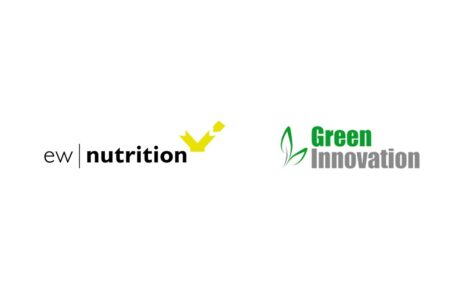



Increasing Milk Production Through Metabolic Health
Last week, the European Bovine Board of Experts (EBBE) moved one step closer to creating a Metabolic Health Scheme - a scheme that will put the cow's metabolic balance first. Charlotte Johnston, TheCattleSite editor reports.The scheme aims to help all farmers improve milk production by looking at parameters that affect metabolic health.
By identifying what inputs the farm is excelling in and what areas can be improved - the scheme will help producers understand how small changes can affect the metabolic health of their cows and subsequently increase milk production efficiency.
The second EBBE meeting, held in Belgium, focused on what affects fertility and how fertility on farms can be improved.
Farm analysis
The meeting commenced with a visit to a top performing dairy farm in the Flanders region of Belgium.
The farm milks 85 Holstein-Friesians, with emphasis placed on milk protein levels - as this is what the farm found pays well. Through the current system, the farm achieved 4.4 per cent fat and 3.6 per cent protein levels.
After the visit, EBBE members discussed the farm visit in detail. It was noted that the fat and protein levels in the milk were much higher than the breed average, and close to perfection. All experts agreed that the quality of forage produced on the farm was excellent, with it being highly degradable.
Most notably, the visit highlighted the farmers need to understand why certain changes are needed. Whilst a farm may be performing well financially, there is always room for improvement. By ensuring that cow inputs (including diet and dry matter intake, disease control, environment and management decisions) are suitable to the individual farm, these improvements can be made.
Fertility parameters
The EBBE delegates said that some of the current measures of fertility have little value when assessing herd fertility. With this in mind, the group discussed which parameters were most useful as a baseline, when assessing fertility.
Four baseline parameters that EBBE members discussed were:
- Pregnancy rates
- Conception rates at first insemination
- Heat detection rates
- Voluntary waiting period
Transition cow comfort
The experts concluded that cow comfort in the three weeks pre and post calving has an important impact on fertility. Much emphasis should be placed on maintaining cows appetite during the transition period. One way to achieve this goal is to ensure that a cow experiences minimum discomfort.
What causes stress:
- Heat stress - insufficient air flow in housing
- Overcrowded pens (leads to competition for feed and resting time)
- Mixing heifers with older cows
- Uncomfortable stalls
- Moving cows around a lot
- Poor staff behaviour (shouting, fast movements and inconsistency of daily operations)
It was also pointed out that nonesterified fatty acids (NEFA) concentrations pre-partum could be used as an indicator of cow comfort. Increased NEFA levels are a result of energy deficiency, implying that feed intake is down, or that the diet is incorrect.
High NEFAs are indicative of an underlying metabolic imbalance that can affect oestrus behaviour, liver efficiency and metabolism, and consequently cow fertility.
Metabolic diseases
Metabolic diseases such as ketosis, acidosis and hypocalcemia are expensive, and can cost up to €320 per cow per year, and ultimately can be the cause of many post partum culls.
There are strong links between metabolic diseases, subsequent fertility issues and uterine health.
To identify and prevent metabolic health issues, EBBE members discussed parameters that we should be looking at post partum?
Measuring B-hydroxybutyrates (BHBs) and NEFAs during the first two weeks post calving will give a good indicator towards metabolic health.
The experts also agreed that it was important to encourage farmers to look at the quality of manure. This can, for example, indicate whether forage particles and starch are being digested satisfactorily.
It is also important for producers to monitor body condition scores (BCS) which will identify any sudden weight changes due to metabolic disorders.
As far as possible the monitoring of dry matter intake is crucial in the pre and post partum period.
Influence of antioxidants on fertility
The group said that the use of antioxidants around calving undoubtedly improved immune system response and fertility. Vitamin A and B carotene supplements particularly have an effect on the corpus leuteum, improving cells integrity in the ovary.
There is evidence to suggest that supplementing cattle with Vitamin E and B carotene around and after calving can increase conception rates at first and second inseminations.
However, the group strongly agreed that dietary supplementation is secondary to good management, and that supplementation only works well on farms that are well managed. This is likely due to positive effects of supplementation being overshadowed by other factors in poorly managed herds.
Metabolic Health Scheme
It has been decided that the group will develop a metabolic health scheme.
Metabolic health implies a cow's ability to self-regulate its metabolic system, in a way to promote physical, mental and social wellbeing - all of which influence production capacity.
A number of factors can cause metabolic imbalances, which can result in clinical or subclinical diseases.
It was apparent from the meeting that good management was the most important factor in increasing productivity in a dairy herd. Management of inputs such as diet, dry matter intake, disease control and environment at an individual farm level, all impact metabolic health.
In turn, metabolic imbalances will result in metabolic diseases, poor fertility and uterine health, decreased dry matter intake, increased loss of body condition, a weaker immune system and more susceptibility to infectious diseases - all affecting milk production.
The scheme is in very early stages, but will continue to be developed through EBBE meetings.



